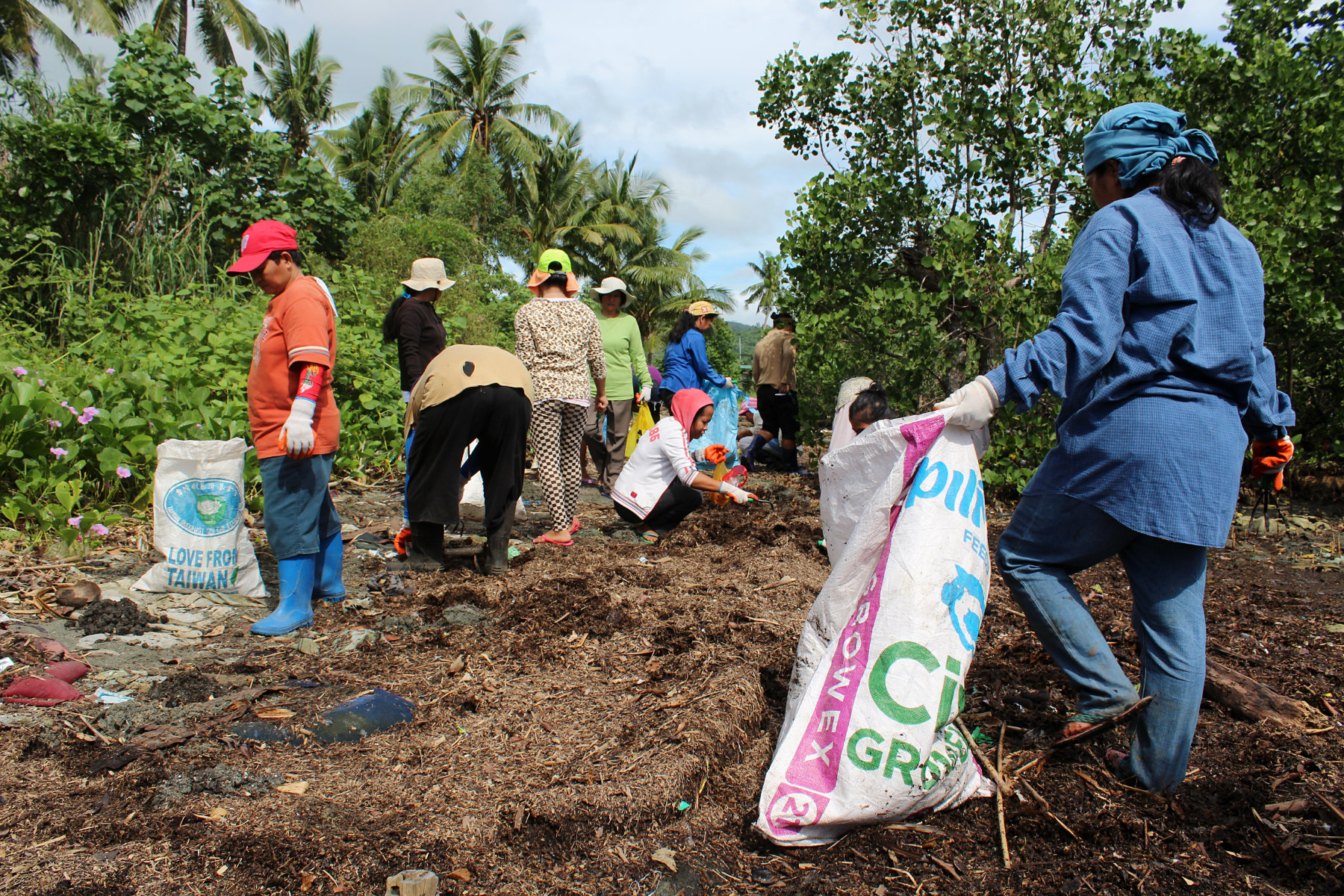Coastal mangrove forests are a natural protection from tsunamis and storm floods because in coastal areas with dense vegetation plants brake the power of waves. In our project we reforest the mangrove forests which have been partly destroyed by typhoon Haiyan in 2013.
Lita T. Ramento is one of the volunteers which take care of the planting. Even before the first planting the 31-years-old comes to a positive conclusion: “I never experienced that so many people in our small commune are committed to one thing without receiving a financial reward. I am very impressed and confident that we will continue working together this well even after the project has been finished.”
The participating commune is united by the shared experience of the catastrophe in 2013 when typhoon Haiyan pressed the water into the bay of Leyte and pushed a tremendous flood wave towards the island. Countless cars and houses were destroyed and many people died. Lita T. Ramento and her family saved themselves to a school nearby. But after the flood there was nothing left of their house in the village Pinamitinan. Now, three years after the catastrophe, Lita and her husband still struggle every day to earn their living and enable their children to get a good education.
Because she wants her children to lead a good life in the future the mother is involved in the catastrophe and coastal protection program by arche noVa and the organization Food For The Hungry Philippines (FHP) despite the worries of her daily life. She was among the first to volunteer for the “Mangrove & Beach Forests Protection Volunteers – MBFPV” group. “I wanted to learn more about the methods of how the coastal areas can be protected from storm floods in a natural way”, Lita explains her commitment.
Mangroves are an important factor for the region – not only as a coastal protection. They are a breeding ground for countless shellfishes, mollusks and fishes and therefor the base for fishing. Many people on Samar earn their living this way, Lita’s husband is one of them. But the fish stock decreased severely since 2013, partly because mangrove forests had been cleared, partly because many coast dwellers enforcedly became fishers after the storm destroyed their coco plantation.
By now the Philippian government reacted and penalized the clearing of mangroves. They also provided funds for the reforestation of mangroves shortly after the storm. The project did not work out well though because hardly any knowledge about reforestation existed in the communities. As a result the majority of the plants has been flushed away.
However, it is definitely possible to reforest mangroves as shown by the experience of other coastal areas. Our project is based on this experience and takes important influencing factors into account to prevent the seedlings from being flushed away. During the last months Lita T. Ramento and the other volunteers attended trainings by FHP and arche noVa and learned e.g. which species of mangroves are common in the region, that a good combination of these species is essential and that they have to be planted at a short distance to each other in order that the seedlings become resistant soon.
Die beteiligten Gemeinden eint die gemeinsame Erfahrung der Katastrophe von 2013, als Taifun Haiyan das Wasser wie ein Trichter in den Golf von Leyte drückte und so eine ungeheure Flutwelle auf die Insel schob, die Autos, Häuser und zahlreiche Menschenleben forderte. Lita T. Ramento und ihre Familie retteten sich ein eine nahegelegene Schule. Doch von ihrem Häuschen in der Ortschaft Pinamitinan ließ die Flutwelle nichts zurück. Jetzt, drei Jahre nach der Katastrophe, kämpfen Lita und ihr Ehemann noch immer jeden Tag darum, sich selbst ein Einkommen und den Kindern eine gute Ausbildung zu ermöglichen.
Weil sie ihren Kindern auch über den Tag hinaus ein gutes Leben bieten will, engagiert sich die Mutter trotz der alltäglichen Sorgen im Katastrophen- und Küstenschutzprogramm von arche noVa und der Organisation Food For The Hungry Philippines (FHP). Als eine der ersten schrieb sie sich in die Liste der „Mangroven- und Strandwald-Schutz-Freiwilligengruppe“ (Mangrove & Beach Forests Protection Volunteers - MBFPV) ein. „Ich hatte das Bedürfnis, mehr über die Methoden zu lernen, wie man die Küstengebiete auf natürlich Weise vor Sturmfluten schützen kann“, erklärt Lita ihr Engagement.
Mangroven sind für die Region ein wichtiger Faktor – nicht nur als Küstenschutz. Sie sind Brutstätte zahlreicher Weichtiere, Krebstiere und Fischarten und damit die Basis für die Fischerei, von der auf Samar viele Menschen leben. Auch Litas Ehemann ist Fischer. Doch die Fischbestände sind seit 2013 stark zurückgegangen. Teilweise, weil Mangroven kurzsichtig abgeholzt wurden, teilweise, weil viele Küstenbewohner nach dem Taifun eher notgedrungen zu Fischern wurden, nachdem der Sturm ihre Kokosplantagen niederfegte.
Die philippinische Regierung hat inzwischen reagiert und das Abholzen von Mangroven unter Strafe gestellt. Auch stellte sie kurz nach dem Wirbelsturm finanzielle Mittel bereit, um Mangroven neu anzulegen. Das Projekt verlief jedoch nur wenig erfolgreich, da vor Ort kaum Wissen zur Wiederaufforstung vorhanden war. In der Folge wurde ein großer Teil der Pflanzen seither wieder ausgespült.
Dass Mangroven durchaus wiederaufgeforstet werden können, zeigen Erfahrungen aus anderen Küstenregionen. Unser Projekt baut auf diesen Erfahrungen auf und berücksichtigt die wichtigen Einflussfaktoren, damit die Setzlinge nicht schnell wieder fortgespült werden. In Trainingseinheiten, die FHP und arche noVa organisieren, haben Lita T. Ramento und die anderen Freiwilligen in den vergangenen Monaten unter anderem gelernt, welche Mangrovenarten es in der Region gibt, dass es auf eine gute Zusammensetzung verschiedener Flach- und Tiefwassermangrovenarten ankommt und dass ein enger Pflanzungsabstand eingehalten werden muss, damit die Jungpflanzen schnell Widerstandskräfte entwickeln können.















